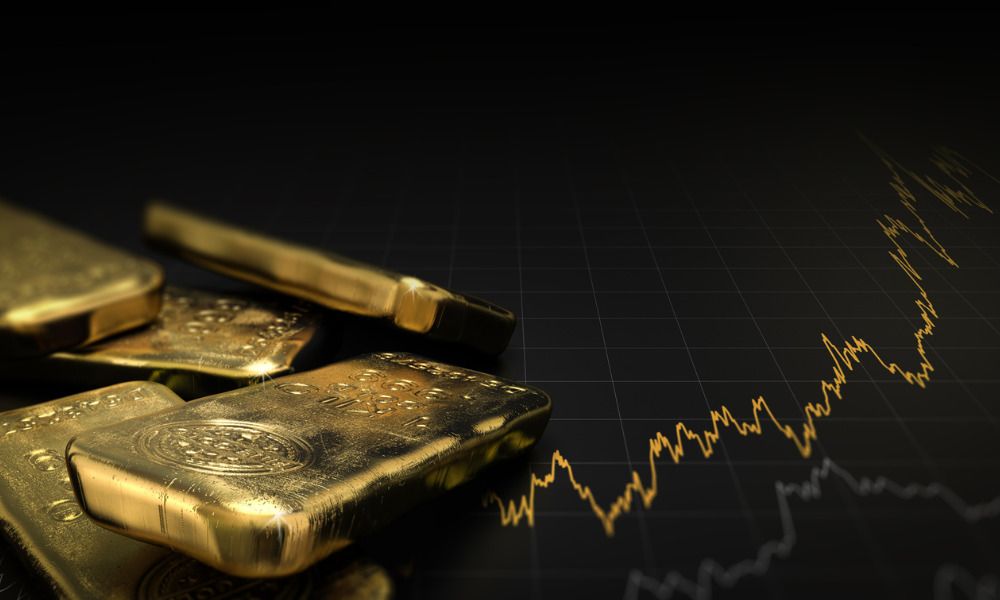Gold bugs are having a field day—for now. The extended the golden bonhomie can endure is a different matter, though.
Demand for the precious yellow metal intensified in 2020 as the global Covid-19 recession deepened, interest rates dropped, and investors took their proverbial flight to safety. The price of an ounce of gold hit an all-time high in early August and remains not far below the highs as of writing.

But that’s not the whole story: This same ETF shot up 18% in 2019 when there wasn’t a pandemic, mounting job losses, and a dovish Federal Reserve. Moreover, the price of gold crashed in March of this year—though not as much as stocks—when the market panic was at its worst.
“Gold has such a long history, and it’s so poorly understood,” said Campbell Harvey, a Duke University finance professor and senior advisor to Research Affiliates. What investors want to know most is just how long the gold party can endure.
Gold Is an Inflation Hedge…for the Long-Term
Gold is often billed as an inflation hedge, meaning it maintains its value even as prices rise. If inflation rises by a certain percentage over a certain period of time, generally, gold would rise by roughly that same percentage over the same period of time. But the hedge only works over the very long term.
In a 2012 paper, Harvey and Claude Erb noted that during the reign of Nebuchadnezzar in Babylon in 562 B.C., an ounce of gold netted you 350 loaves of bread. At the time of Harvey’s paper, an ounce of gold went for $1,600, meaning it could purchase 350 loaves of bread costing $4.57.
Over a millennium (or three), gold has maintained its purchasing power. But what about a more reasonable timeline? Not so much, says Harvey.
The price of gold swings much more dramatically than actual inflation. And during an inflation shock, when prices rise exponentially, gold doesn’t necessarily match the gains in prices and inflation.

Gold investors may sell off some of their winnings and then reinvest the gains in higher-yielding assets, like stocks.
Gold: A Safe Asset That Doesn’t Always Keep You Safe
Gold is a strange thing. No one uses it to buy anything, so it’s not a currency. It has a few industrial uses and demand for jewelry, but it’s not a widely used commodity for manufacturing. It doesn’t provide investors with income, like dividends or yield.
Talk long enough with financial professionals, and eventually, you’ll come to the tautology at the heart of gold: This metal has value because people think it has value.
When times get tough, the theory goes, investors become less enamored with riskier assets like stocks and bonds and want to buy something that feels safer. That narrative doesn’t quite tell the whole story, said Wasif Latif, head of investments at Victory Capital Solutions
“Just because there’s an economic slowdown doesn’t necessarily mean gold will be a place to go to,” he said.
In fact, over time, gold tends to underperform the S&P 500.
Gold shot up in value at the beginning of 2016, for instance, when stocks got off to a terrible start, thanks to worries about slow growth in China and weak demand for oil and other commodities. By the end of the year, though, the S&P 500 had doubled gold’s return.
Gold Is Expensive
Earlier this month, an ounce of gold cost $2,062, an all-time high. If history is any guide, investors may want to be careful.
A recent paper published by Harvey and colleagues on the open platform SSRN shows what kind of pain could be in store for those late to the gold party. The paper notes that the current inflation-adjusted price of gold is nearly as high as in January 1980 and August 2011. (It’s worth noting that the nation was battling stagflation in January 1980, and its creditworthiness had just been lowered in August 2011.)
Five years after these two peaks, life looked a little different. The price of gold dropped by an inflation-adjusted 67% by 1985 and 33% by 2016. Investors in the 2010s who were overly influenced by concerns of a double-dip recession and bickering politicians in Washington, D.C., unable to get anything done, made a costly mistake.
Should You Invest in Gold?
Harvey doesn’t venture a guess as to how long this current streak will last. Thanks to ETFs, investors have a much easier time buying gold today than in the past. Investors jumping onto the bandwagon may be “creating their own truth,” he said.
That means it’s impossible to know how long the current run-up will last. Perhaps demand for gold lasts as long as interest rates hang below zero once adjusted for inflation.
In a world where bond yields are so low, many investors may not regard plunking a bit more capital into gold as a high opportunity cost, even if they may buy when the metal is near its highs. And gold does tend to perform at the least better than stocks in the immediate aftermath of a crisis, say after 2008, or more recently from February 19 to March 23, according to Morningstar data.
Both Campbell and Latif say that gold has a place in a diversified portfolio, but the allocation should stay in the single digits.
The rally may last a bit longer, perhaps until there’s a widely administered vaccine and people feel safe enough to return to everyday life. Or maybe speculators will exit the market en masse before then, causing prices to decline. With such a volatile asset, you must be prepared for either scenario.
“It’s like hot sauce,” Latif said. “It’s good to have a diversifier, but you don’t want too much of it.”
